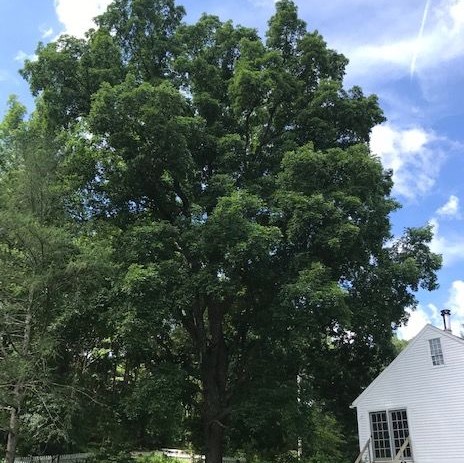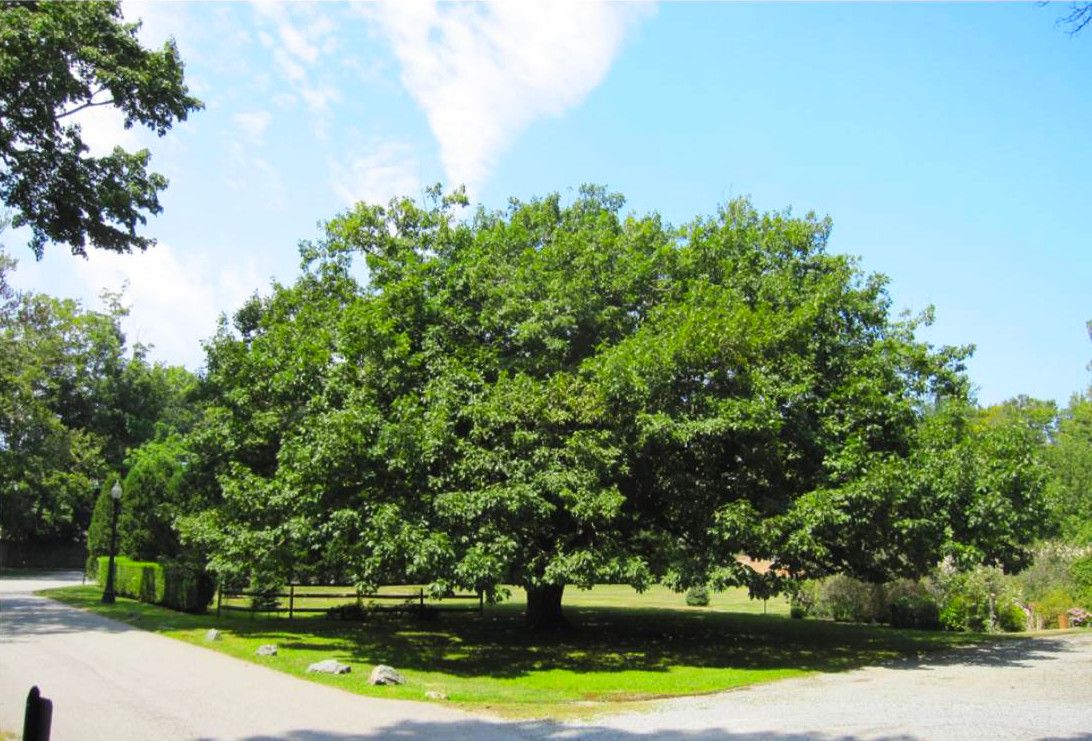RI Tree Crowns Another Champion Tree
John Campanini, Technical Director
The Rhode Island Tree Council has named another Rhode Island champion tree. A beautiful and healthy Shagbark Hickory (Carya ovata) located on Comstock Road in North Smithfield was crowned a species champion recently by RI Tree Council. The tree measures 12’ in trunk circumference with an 83’crown spread.
The tree is 91 feet tall and is estimated to be 150-200 years old. The Shagbark hickory is a native tree. According to fossil records, this species once thrived in Central Europe, China, and Alaska! Anthony Chernasky, the tree’s owner, nominated it.
RI Tree found another champion tree not long ago. Previously, RI Tree named a White Willow (Salix alba) growing on Dexter Rock Road in Lincoln, RI.
The White Willow is one of six willow species classified as a true “Weeping Willow” for having the iconic pendulous form that this special group is known for. The Lincoln-based champion has a trunk circumference of 22 feet. It is 86′ tall with an average crown spread of 73 feet. Jeffrey Crompton, the tree’s owner, nominated it.
The Helen Walker Raleigh Tree Care Trust, managed by the Rhode Island Foundation, provides funding for the Helen Walker Champion Tree program. RI Tree popularized the program with annual calendars illustrating the champions and other noteworthy trees. RITree published the first summary publication of Rhode Island Champion Trees in 2008. Contact RI Tree for the latest summary publication
To submit a nomination, the Council asks you to complete our simple form and that you include a photograph, a circumference measurement, and some special notes. We urge you to partake with other Rhode Islanders in discovering and nominating trees you find to be culturally, historically, or biologically notable. See RI Tree’s website for more information on the Helen Walker Champion Tree program.




